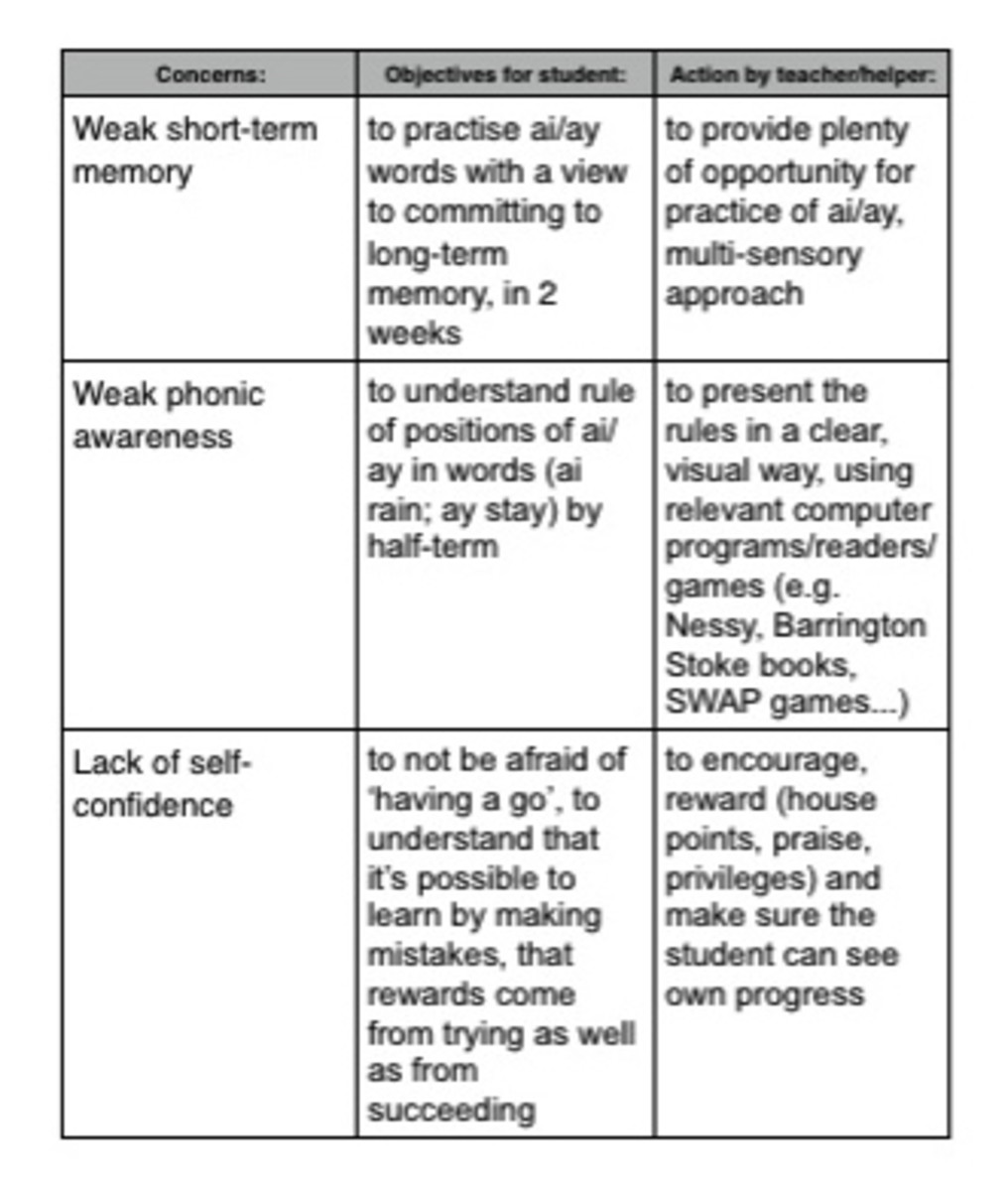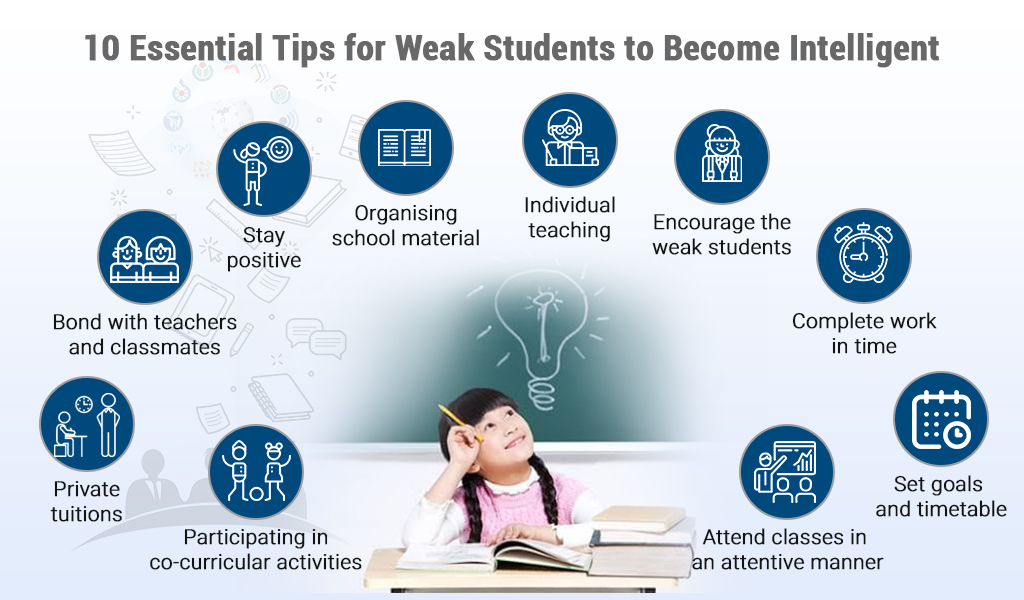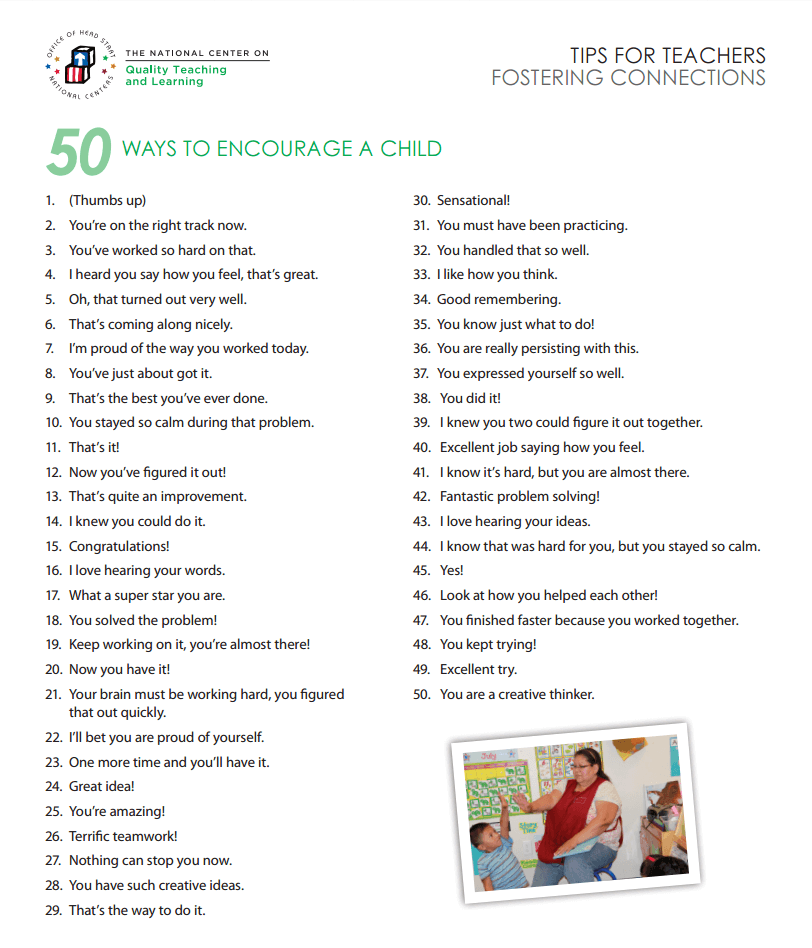To encourage weak students, provide personalized attention and support through individualized instruction and positive reinforcement. Weak students can often feel overwhelmed and discouraged by their academic struggles.
However, with the right strategies and support, they can be motivated to improve and succeed. By offering personalized attention and instruction, teachers can identify the specific areas where students are struggling and provide targeted interventions. This can include one-on-one tutoring, small group instruction, or extra practice activities.
Additionally, positive reinforcement, such as praise and rewards, can boost students’ confidence and motivation. By creating a supportive and nurturing environment, weak students can be encouraged to develop their skills and reach their full potential.
Understanding Weakness
Understanding the weaknesses of students is a crucial step in helping them reach their full potential. As educators, it is our responsibility to identify and analyze the causes of weakness so that we can devise appropriate strategies to encourage and support weak students. By understanding the root causes, we can tailor our approach to meet their individual needs and help them overcome their challenges.
Identifying Weak Students
Identifying weak students requires a keen observation and a thorough assessment of their academic performance. Here are some key indicators that can help you in identifying weak students:
- Poor grades consistently in various subjects
- Lack of participation in class activities
- Difficulty in understanding and applying concepts
- Inconsistent attendance and inability to keep up with deadlines
- Low motivation and disengagement from the learning process
Keeping an eye out for these signs can help you identify students who need extra support and intervention.
Analyzing The Causes Of Weakness
Analyzing the causes of weakness is essential for devising effective strategies to encourage weak students. Here are some common factors that can contribute to a student’s weaknesses:
| Factors | Description |
|---|---|
| Learning Disabilities | Conditions such as dyslexia or ADHD can affect a student’s ability to learn and process information. |
| Lack of Foundation | If a student lacks a strong foundation in fundamental concepts, they may struggle to grasp more advanced topics. |
| Inadequate Study Skills | Poor time management, ineffective note-taking, and lack of organization can hinder a student’s ability to study effectively. |
| External Factors | Issues like personal problems, family issues, or social distractions can impact a student’s concentration and motivation. |
| Ineffective Teaching Methods | Unsuitable teaching methods or a mismatch between the student’s learning style and the teaching approach can hinder their progress. |
By identifying and analyzing these causes, you can better understand the unique challenges faced by weak students and tailor your teaching and support accordingly.
Creating A Supportive Learning Environment
Creating a supportive learning environment is crucial for encouraging weak students and helping them thrive academically. By establishing trust and rapport, fostering a growth mindset, and differentiating instruction, teachers can create an environment that is conducive to the individual needs and strengths of each student. Let’s explore each of these strategies in more detail.
Establishing Trust And Rapport
In order to encourage weak students, it is essential to establish trust and rapport with them. Students who feel comfortable and safe in the classroom are more likely to engage in learning and take risks. Here are a few ways teachers can build trust with their students:
- Show genuine interest and care for each student’s well-being.
- Listen actively and validate students’ thoughts and opinions.
- Create a non-judgmental atmosphere where mistakes are seen as opportunities for growth.
Fostering A Growth Mindset
A growth mindset is the belief that one’s abilities and intelligence can be developed through effort and perseverance. Encouraging weak students to adopt a growth mindset can have a significant impact on their academic performance and motivation. Here’s how teachers can foster a growth mindset:
- Emphasize the importance of effort and hard work rather than focusing solely on intelligence or talent.
- Provide regular opportunities for reflection and self-assessment, highlighting areas of improvement and growth.
- Offer constructive feedback that focuses on progress and effort rather than fixed abilities.
Differentiating Instruction, Ensuring Each Heading Adheres To Html Syntax.
Not all students learn in the same way or at the same pace. To cater to the diverse needs of weak students, teachers should differentiate instruction. This ensures that each student receives the necessary support and resources to succeed. Here are a few strategies for differentiating instruction:
- Identify students’ individual strengths and weaknesses and tailor instruction accordingly.
- Provide additional resources and materials for struggling students to reinforce learning.
- Use a variety of teaching methods and instructional strategies to accommodate different learning styles.
- Offer opportunities for small group or one-on-one instruction to provide personalized support.
Providing Additional Support
When it comes to helping weak students improve, providing additional support is crucial. By offering personalized attention and tailored resources, educators can effectively address the specific learning needs of struggling students. This section will explore three strategies for providing additional support to weak students: offering one-on-one instruction, implementing peer tutoring, and utilizing educational technology.
Offering One-on-one Instruction
One of the most effective ways to encourage weak students is through one-on-one instruction. This individualized approach allows educators to focus on the specific challenges faced by each student and develop targeted strategies for improvement.
During one-on-one sessions, teachers can break down complex concepts into manageable parts, ensuring that weak students grasp the fundamental building blocks of a subject. By providing personalized feedback and guidance, educators can help students overcome their weaknesses and gain confidence in their abilities.
Implementing Peer Tutoring
Peer tutoring is another beneficial strategy for supporting weak students. Pairing struggling students with academically stronger peers can enhance their understanding of challenging subjects.
Through peer tutoring, weak students have the opportunity to learn from their peers who may explain concepts in a way that resonates with them. This approach fosters a collaborative learning environment where students can encourage and support each other, ultimately leading to improved academic performance.
Utilizing Educational Technology
In today’s digital age, educational technology offers a wealth of resources that can be leveraged to support weak students. By incorporating technology tools and platforms into the learning process, educators can customize instruction to meet individual student needs.
Online learning platforms, interactive apps, and educational software provide opportunities for weak students to practice skills at their own pace and receive immediate feedback. Additionally, technology tools can offer engaging and interactive content that caters to different learning styles, making it easier for struggling students to grasp and retain information.
In conclusion, providing additional support is essential for encouraging weak students. By offering one-on-one instruction, implementing peer tutoring, and utilizing educational technology, educators can create a supportive learning environment that meets the unique needs of struggling students.

Credit: discover.hubpages.com
Setting Realistic Goals And Expectations
When it comes to encouraging weak students, setting realistic goals and expectations is a crucial step towards their improvement. By setting achievable objectives, students are more motivated and confident in their abilities. It helps them see progress and builds a foundation for further growth. Let’s explore how breaking tasks into manageable steps, designing individualized learning plans, and promoting self-reflection contribute to this process.
Breaking Tasks Into Manageable Steps
In order to effectively encourage weak students, breaking tasks into manageable steps is essential. When faced with overwhelming challenges, students may feel discouraged and give up easily. By breaking down complex tasks into smaller, bite-sized components, students find it easier to understand and complete them. Here’s a simple example:
| Task | Steps |
|---|---|
| Writing an essay |
|
By following these smaller steps, weak students can gradually build their skills and improve their overall performance. Breaking tasks into manageable steps not only enhances their learning experience but also empowers them to tackle more complex assignments with confidence.
Designing Individualized Learning Plans
Another powerful method to encourage weaker students is by designing individualized learning plans. Every student possesses unique strengths, weaknesses, and learning preferences. By tailoring educational strategies to their specific needs, we can maximize their potential. Here’s an example of an individualized learning plan:
| Student | Weakness | Learning Plan |
|---|---|---|
| John | Mathematics |
|
This personalized approach addresses John’s specific weaknesses in mathematics and helps him overcome them effectively. By adapting teaching methods to match individual learning needs, weak students are more likely to grasp concepts and succeed academically.
Promoting Self-reflection
Self-reflection plays a crucial role in encouraging weak students. By consistently engaging students in reflecting upon their progress and achievements, they become more aware of their strengths and weaknesses. Here are some ways to promote self-reflection:
- Encourage students to evaluate their own work
- Provide constructive feedback and guidance
- Prompt students to set personal goals
- Regularly discuss their growth and improvement
Through self-reflection, weak students develop a sense of ownership and responsibility for their learning. It helps them identify areas that require additional effort and motivates them to strive for continuous improvement.
Implementing Effective Teaching Strategies
When faced with the challenge of encouraging weak students, teachers need to implement effective teaching strategies that cater to their unique needs. These strategies not only aim to enhance their learning experience but also provide them with the necessary tools and support to succeed. By utilizing multisensory techniques, incorporating hands-on activities, and employing formative assessments, teachers can create an inclusive and engaging learning environment for their students.
Using Multisensory Techniques
One effective teaching strategy that can greatly benefit weak students is the use of multisensory techniques. These techniques harness the power of different senses to enhance learning and retention. By engaging multiple senses, such as sight, hearing, and touch, students are able to make deeper connections with the material being taught. Teachers can achieve this by incorporating visual aids, audio recordings, and hands-on manipulatives into their lessons.
This approach not only helps weak students understand abstract concepts but also strengthens their overall cognitive development. For example, when teaching math, teachers can encourage students to use manipulatives like counters or blocks to visually represent mathematical operations. Similarly, when teaching language skills, incorporating visual tools like flashcards or videos can help students grasp concepts more effectively.
Incorporating Hands-on Activities
Another effective strategy for encouraging weak students is the incorporation of hands-on activities into the curriculum. Hands-on activities provide a dynamic and interactive learning experience, allowing students to actively engage with the subject matter. This approach is especially beneficial for students who struggle with traditional instruction methods.
Teachers can include activities such as experiments, simulations, or group projects to make learning more tangible and relatable. For instance, in a science lesson on the water cycle, students can participate in a hands-on experiment where they simulate the process by observing and analyzing the transformation of water from liquid to gas. This experiential learning not only reinforces their understanding but also cultivates their curiosity and critical thinking abilities.
Employing Formative Assessments
Formative assessments are a valuable tool for teachers to monitor and guide weak students’ progress on an ongoing basis. These assessments allow teachers to gather real-time feedback on students’ strengths and weaknesses, enabling them to tailor their instructional approach accordingly.
Teachers can employ various formative assessment techniques such as quizzes, discussions, and observations to measure understanding and identify areas that need improvement. By regularly assessing students’ understanding, teachers can intervene promptly, provide individualized support, and modify their teaching strategies as needed.
For example, teachers can use quizzes with multiple-choice questions or short answers to gauge students’ comprehension. These assessments not only aid in identifying areas of weakness but also serve as a means to review and reinforce key concepts.
| Benefits of Implementing Effective Teaching Strategies | ||
|---|---|---|
| Enhanced engagement | Increased retention | Improved critical thinking skills |
| Personalized learning | Boosted self-confidence | Facilitated meaningful connections with the subject matter |
By implementing these effective teaching strategies, teachers can create an inclusive and supportive learning environment that caters to the needs of weak students. Through multisensory techniques, hands-on activities, and formative assessments, teachers can nurture their students’ growth and pave the way for success.

Credit: ziyyara.com
Building Motivation And Confidence
Encouraging weak students involves building their motivation and confidence through personalized support, positive reinforcement, interactive learning experiences, and clear communication. Tailoring teaching strategies to their needs, providing constructive feedback, and fostering a growth mindset can help these students thrive academically.
Building motivation and confidence When it comes to encouraging weak students, building motivation and confidence plays a crucial role in their academic development. Motivated and confident students are more likely to overcome challenges, take risks, and strive for success. In this section, we will explore three effective strategies to help build motivation and confidence in weak students: providing positive reinforcement, offering constructive feedback, and celebrating small victories.Providing Positive Reinforcement
Positive reinforcement is a powerful tool that can boost a student’s motivation and confidence. By acknowledging and praising their efforts, you can create a supportive learning environment. Here are some ways to provide positive reinforcement:- Offer specific and genuine compliments about their progress or achievements.
- Recognize their strengths and highlight their unique skills.
- Use positive language and encourage them to believe in their abilities.
- Create a system of rewards, such as small incentives or privileges, to motivate them.
Offering Constructive Feedback
Constructive feedback is an essential component of building motivation and confidence in weak students. It helps them understand their areas of improvement and provides guidance on how to overcome challenges. Here are some effective ways to offer constructive feedback:- Focus on specific areas for improvement rather than criticizing the student as a whole.
- Provide clear and actionable suggestions on how they can enhance their skills.
- Use a positive and encouraging tone to motivate them to make progress.
- Offer opportunities for them to reflect on their work and discuss their challenges.
Celebrating Small Victories
Celebrating small victories is a powerful way to boost motivation and confidence in weak students. By recognizing and acknowledging their progress, you can help them stay motivated on their learning journey. Here are effective strategies to celebrate small victories:| Strategy | Description |
|---|---|
| Publicly acknowledge their achievements | Share their success with classmates, parents, or teachers through newsletters, announcements, or awards. |
| Create a progress chart | Track their progress on a visible chart or graph, allowing them to see their improvements over time. |
| Organize small celebrations | Host mini-parties, special activities, or outings to celebrate their milestones and achievements. |

Credit: www.teachthought.com
Frequently Asked Questions On How Do You Encourage Weak Students?
How Do You Motivate Weak Students In Class?
Motivating weak students involves utilizing various teaching techniques, providing individual support, setting achievable goals, offering positive reinforcement, and fostering a supportive learning environment. Students may benefit from personalized attention, engaging activities, and ongoing encouragement to boost their confidence and performance in the classroom.
What Do You Say To A Weak Student?
Encourage the weak student by saying, “You can improve with effort and practice. Seek help from your teacher or peers. Stay motivated and believe in yourself. Focus on your strengths and set achievable goals. Don’t give up; remember that progress takes time and dedication.
“
How Do You Encourage Struggling Students?
To encourage struggling students, provide personalized support, such as one-on-one tutoring or additional resources. Offer positive feedback to boost their confidence and motivate them. Set achievable goals and celebrate their progress. Create a nurturing environment where they feel safe to ask questions and seek help.
How Do You Encourage A Low Performing Student?
To encourage a low performing student: 1. Provide individualized support and guidance. 2. Offer praise and recognition for small accomplishments. 3. Set attainable goals and celebrate progress. 4. Use positive reinforcement and encouragement. 5. Identify and address any underlying difficulties or obstacles they may be facing.
Overall, personalized attention and encouragement can boost motivation and improve performance.
Conclusion
Encouraging weak students is a vital responsibility of educators, as it helps these students build confidence, overcome challenges, and reach their full potential. By providing individualized support, setting achievable goals, and fostering a positive learning environment, educators can empower weak students to succeed academically and develop important life skills.
Additionally, promoting a growth mindset and acknowledging their progress can further motivate these students. With the right approach and support, weak students can thrive and excel in their educational journey.